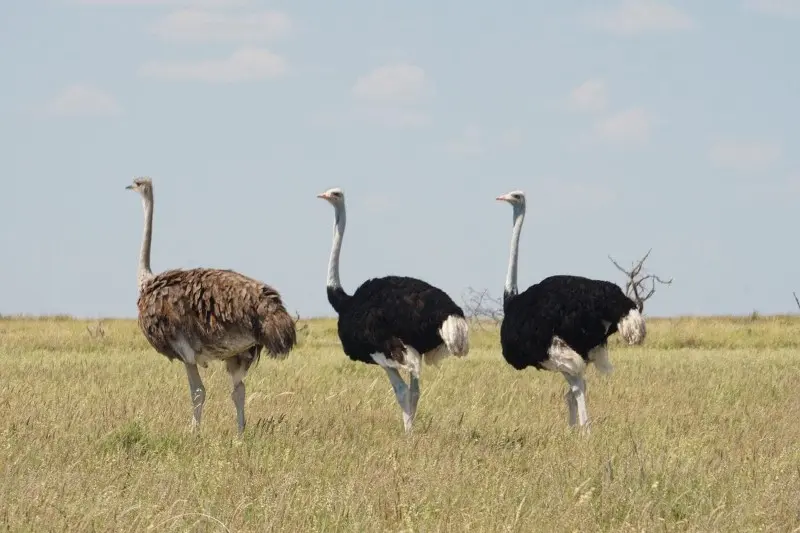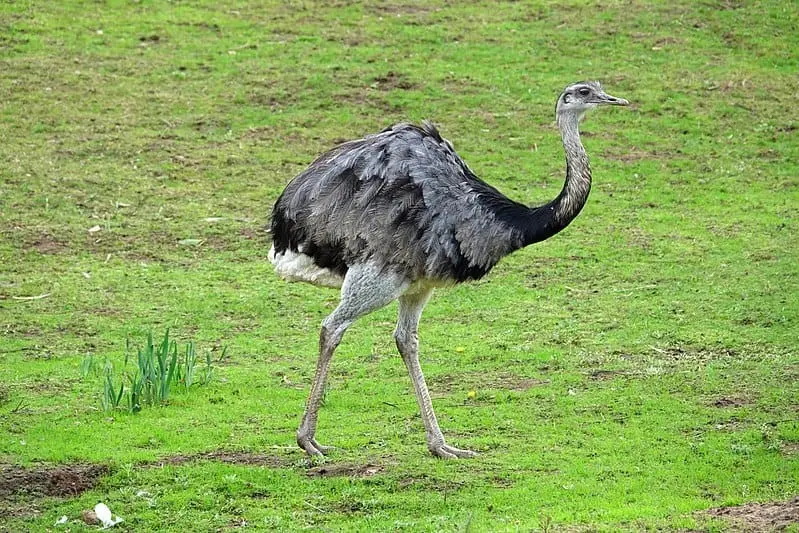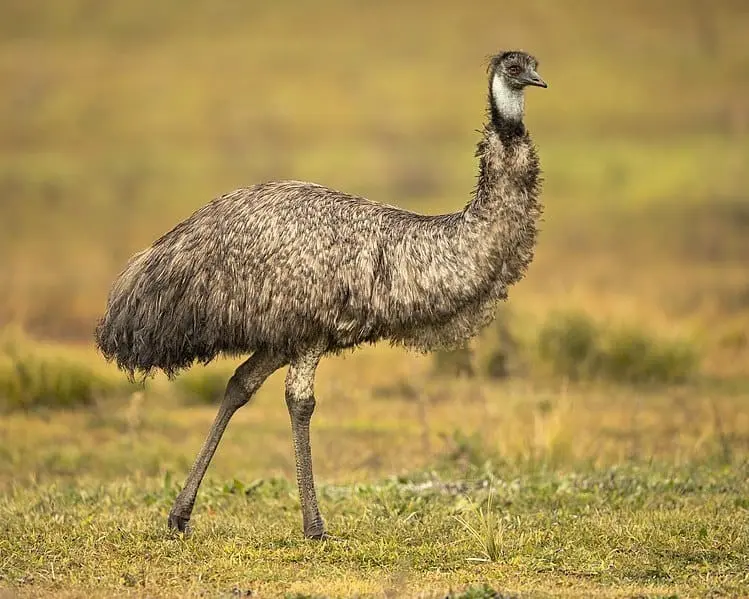What is the difference between ostrich, Emu and Rhea?
They are all large birds with long legs, long necks, and they do not fly. However, these are the few features they have in common. Not only have they lived in places far apart from each other, but they are also genetically separate.
Although it was initially assumed that they were part of the same group of animals, genetic studies have shown that rheas and ostriches are not related to any other existing bird. Emus, on the other hand, are part of the cassowary family. See below for more details on the differences between ostriches, emus, and rheas.
Ostrich
Ostriches are the largest and fastest flightless birds in the world. They grow up to 2.8 m tall and can run up to 70 km/h for 30 min or for four hours at a constant speed of 60 km/h.1 There are two species, the Common ostrich (Struthio camelus) and the Somali ostrich (Struthio molybdophanes) which was recognized as a different species in 2014.
Males are black with only the wingtips and tail white. Females and juveniles are grayish brown and white. The head and neck have shades of gray or pink and are almost bare, with a thin layer of feathers.2 They are native to the savannas and Sahel of Africa.
An easy way to distinguish ostriches from emus and rheas is to look at their toes: while most birds have three or four toes, ostriches are the only birds that have only two toes,3 and it is the only bird that walks on tiptoe.

Ostriches are bred all over the world for their leather and related meats. In Brazil, their breeding (called strutioculture) has increased in recent years, mainly due to the fact that they easily adapt to different climates. Although the number of captive ostriches is growing, their wild populations have declined dramatically, with most of the surviving birds living in reserves or on farms.
Of the five subspecies of common ostrich, one went extinct around 1966. Currently, ostrich populations in North Africa are protected under the Convention on International Trade in Endangered Species (CITES), their international trade is prohibited and their sale for non-commercial purposes is strictly regulated.
The International Union for Conservation of Nature (IUCN) and the BirdLife International, consider Somali ostriches to be vulnerable to extinction, while Commom ostriches, for now, are classified as Low Concern — despite declining numbers.
Rhea
Although at first glance they look similar, ostriches and rheas are not related. There are two or three species of Rheas (under study), all native to South America. However, only the Greather rhea (Rhea americana) inhabits Brazil. This is the largest and heaviest bird native to the Americas, with males reaching up to 1.70 m in length.
In addition to being smaller, rheas differ from ostriches in having three toes, grayish-brown plumage, and feathered necks and thighs. There are currently five subspecies of Rheas, three of which are found in Brazil. However, the subspecies are not easily distinguishable.

Rheas live in open areas such as fields and scrubland, so they are not found in humid, closed forests such as the Atlantic Forest or the Amazon.
Rheas are omnivorous, eating mainly leaves, fruits and seeds, but also small animals such as insects, fish, rodents and reptiles, especially when they are young. They do not usually eat grains, so they can be beneficial to some farmers by eating grasshoppers, beetles, cockroaches, and other crop pests.
On the other hand, Rheas are often undesirable in certain fields because they feed on broad-leaved plants such as cabbage, chard, and collards. Because of this, they are often hunted by farmers, a factor that has contributed to their decline, as has the burning of fields and the conversion of pastures to farms.4
According to the IUCN, Common Rheas are considered “Near Threatened”, and international trade in Rheas captured in the wild is also restricted — as per CITES5.
Emu
Emus are native to Australia and are the second largest bird in the world, growing up to 6 feet (1.9 m) tall. Like rheas, emus have three toes. Their legs, adapted for running, allow them to reach speeds of up to 30 mph (48 km/h).
Their legs are featherless, but their necks are feathered near the head, where the black feathers become sparser. Unlike rheas and ostriches, which are flightless but have relatively large wings to help them balance when running or for display, emus have small, vestigial wings of only 7.8 inches (20cm).

In addition to having a feathered neck, emus are darker than rheas. Their feathers are split in half from the spine, and because they are always pointing down, they have a heavy appearance.
Like the other birds mentioned here, emus are bred for their meat, skin, feathers, and other parts. Although their numbers are greater than before European colonization,5 some local populations are threatened with extinction. Threats include deforestation and habitat fragmentation, deliberate culling, collisions with vehicles, and predation on eggs and chicks.2
Despite this, overall, their populations are stable and considered “Low Concern” by the IUCN.
Read More:
